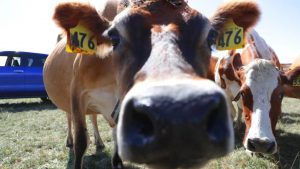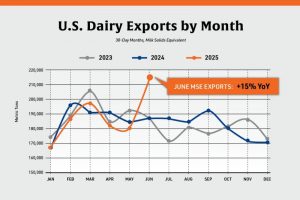
NZ scientists develop system that underlines role of amino acids in human health.
Guidelines for human protein intake are likely to be altered soon thanks to a new system largely developed by New Zealand scientists that puts more focus upon the valuable amino acids contained within protein sources.
A scientist leading the research also maintains it will compel governments around the world to revisit red meat and dairy as high-quality protein sources.
Massey University distinguished professor and Riddet Institute laureate Paul Moughan has recently returned from the Netherlands, where he and fellow scientists presented at the international symposium on dietary protein for human health. He chaired the summit meeting, spearheaded by the UN’s Food and Agriculture Organisation (FAO).
“The purpose of the symposium was to address how much protein we really need, and what are the types of protein that are important to the human diet,” Moughan said.
He said human protein intake has been calculated until now using a dated, inaccurate index that does not give recognition to the quality of different proteins in terms of the valuable amino acids they contain.
“It has really been more about measuring the quantity of protein, rather than quality, up until now.”
The researchers used the symposium to showcase a new method, the Digestible Indispensable Amino Acids Score (DIAAS), an index that takes account of the amino acids absorbed from protein sources.
He said putting many of New Zealand’s traditional animal-based proteins, like red meat and dairy, under this new index moves them well up the rankings compared to the older index.
“Meat and dairy have very high levels of amino acids that are highly absorbed and available to humans.”

He said NZ dairy products already have proven low carbon footprint internationally.
“But take into account the quality of the protein and it also makes NZ dairy one the most efficient forms of production for providing those amino acids in the world.”
Greenhouse gas assessments of food systems do not take this value into account.
He said it is possible to take standard greenhouse gas life cycle analysis for food products, then incorporate the DIAAS into that when determining the food product’s true footprint in nutritional and climatic terms.
Moughan said the old evaluation system tended to fall in favour of plant protein’s value.
But dairy’s profile stacks up under the DIAAS system than the old measurement index, to the tune of 30% better. In contrast, rice protein’s value, for example, almost halves when assessed under DIAAS.
The index has gained the attention of the FAO, recognising the impact its findings could have on global food policies as developing nations seek out higher quality proteins in years to come, while producers of animal proteins also face pressure to reduce emissions.
“It is time to start acknowledging the complexity and look for the right matrix to have a fairer argument about what constitutes the right sort of protein to be producing.”
The DIAAS has been subject to over 100 peer-reviewed research publications and Moughan said the FAO has proven highly supportive of the new system being the new standard.
He said NZ scientists have proven particularly adept at fractionating milk into assorted compounds, many that contain quality amino acids.
“And our meat sector is also moving to higher value products.
“But we have to start talking about the future of the protein sector here in terms of amino acids. This new index system will allow us to market them properly for the first time. The market has been undervaluing them for the past 20-30 years by looking on production as protein – but it is not protein people need, it is amino acids.”
He said scientific research into human protein needs is exploding at present as the world grapples with developing nations needing more of it, and an ageing population also requiring higher per capita protein intake to remain healthy.
For example, work by NZ and Danish scientists in 2017 showed the World Health Organisation recommendation of .8g of protein per kg bodyweight was insufficient for men over 70 to maintain and increase their muscle mass.
Moughan said he is not advocating that plant protein has no place in diets.
“But I am arguing the current way of looking at protein is flawed and if we do not change it we risk throwing the baby out with the bathwater.”

























